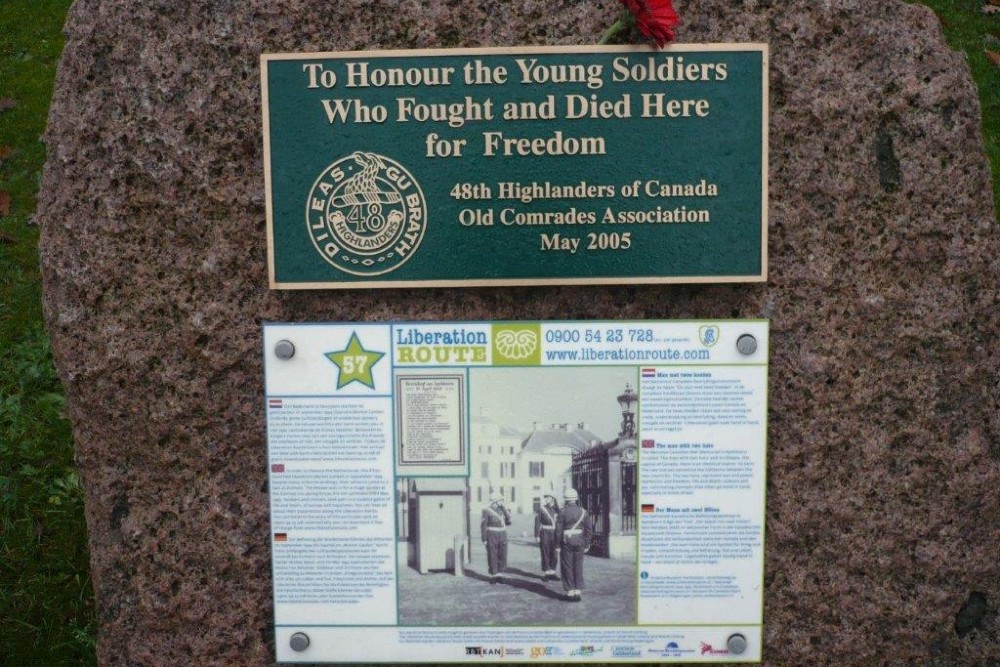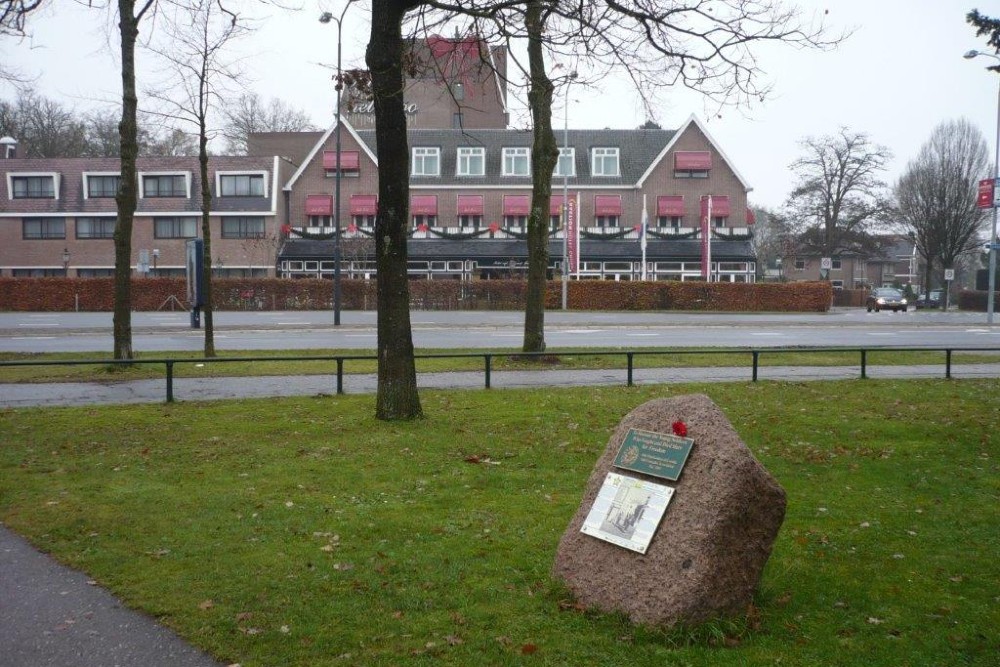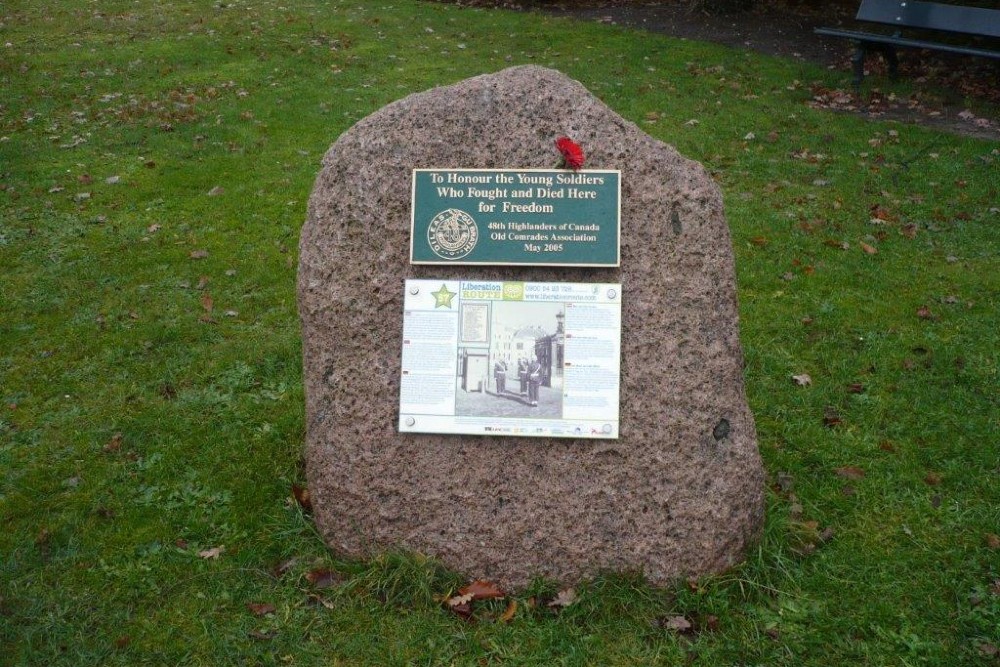Liberation Route Marker 057: The Man with Two Hats
The Man with Two Hats
The National Canadian War Memorial in Apeldoorn is called 'The Man with Two Hats'. Ottawa, Canada, has an identical statue symbolising the solidarity between the two countries. The two hats represent war and peace, repression and freedom, life and death, sadness and joy. In fact, many Dutch people regard the Canadians as the true liberators of the Netherlands.
Even though The Netherlands was liberated by many different nationalities like the British, American, French, Belgian, Polish and Norwegian, the Canadians have a special place in the Dutch people's hearts. Apeldoorn also has a special relationship with the Canadians, because the last Canadian headquarters had been stationed in the royal palace in Apeldoorn at the end of the war. The war ended on 5th May 1945 but not all of the allied troops could be repatriated. Large numbers of Canadian troops were forced to stay here for another six months or more. During this time, the soldiers mixed with the civilians and some even married, despite the government's attempts to discourage it.
Whilst the Canadians had been treated like heroes to begin with, tensions between the two nationalities soon grew. When the last Canadian soldiers left The Netherlands on 7th January 1946, they left 5706 behind. The majority of whom are buried in the Canadian war cemeteries in Bergen op Zoom, Holten and Groesbeek. On 2nd May 2000, a memorial was erected opposite the royal palace, Palace Het Loo. This National Canadian War Memorial has been named 'The Man with Two Hats', and has a twin in Ottawa that was unveiled on 11th May 2002. Together, these two statues symbolise the lasting solidarity still felt by these two nations.
Audiospot - The Man with Two Hats
Liberation Route Europe is a certified Cultural Route of the Council of Europe. With hundreds of sites and stories in nine European countries, the route links the main regions along the advance of the Allied Forces in 1943-1945.
The entire route consists of themed routes that can be travelled by by hiking, walking, cycling and car. These routes pass numerous historical and interesting sites and tell stories from a multitude of perspectives that were important in the final phase of World War II.
Many routes feature listening spots, offering the opportunity to listen to a historical story at a location. In addition, many ‘Vectors of Memory’ have been placed, indicating that the passer-by is on one of the Liberation Routes.
The routes can be found on the Liberation Route Europe website or in the app through which many stories can also be listened to.
Do you have more information about this location? Inform us!
Source
- Text: TracesOfWar & Liberation Route Europe
- Photos: Arie van Wijngaarden (1, 2, 4), Jan Hoppe (3)
Nearby
Museum
- Museum of the Chancellery of Dutch Orders - Apeldoorn
- Apeldoornsche Bosch Remembrance Centre - Apeldoorn
- Museum Vaassen History - Vaassen
Point of interest
- Former Villa & Bunker Arthur Seyss-Inquart - Apeldoorn
- NSB Office Ancestry Research - Apeldoorn
- Koning Willem III-kazerne - Apeldoorn
Monument
- National Canadian Liberation Memorial 'The Man with Two Hats' - Apeldoorn
- Memorial 4th November 1944 Royal Palace Het Loo - Apeldoorn
- Dutch East Indies And New Guinea Monument Apeldoorn - Apeldoorn
Cemetery
- Dutch War Graves Wenum - Wenum
- Dutch War Graves General Cemetery Heidehof Ugchelen - Ugchelen (Apeldoorn)
- Commonwealth War Graves Cemetery Heidehof Ugchelen - Ugchelen (Apeldoorn)
Remembrance Stone
- Memorial Stone Bas Backerlaan 32 - Apeldoorn
- Memorial Stone Frisolaan 9 - Apeldoorn
- Memorial Stones Bas Backerlaan 28 - Apeldoorn







